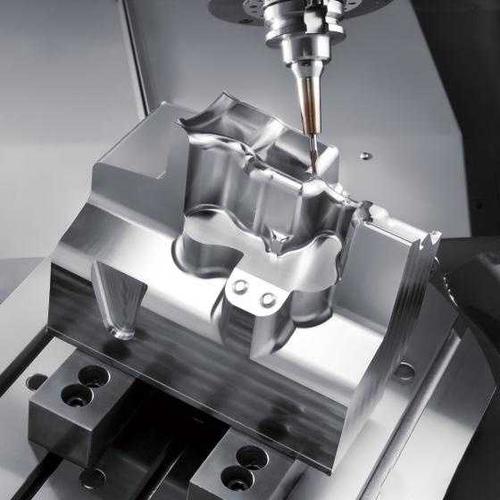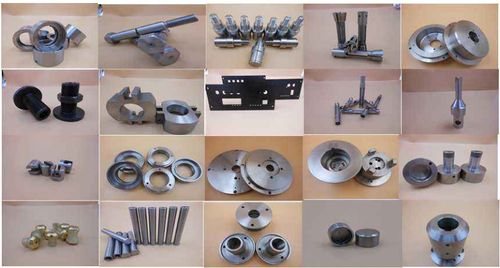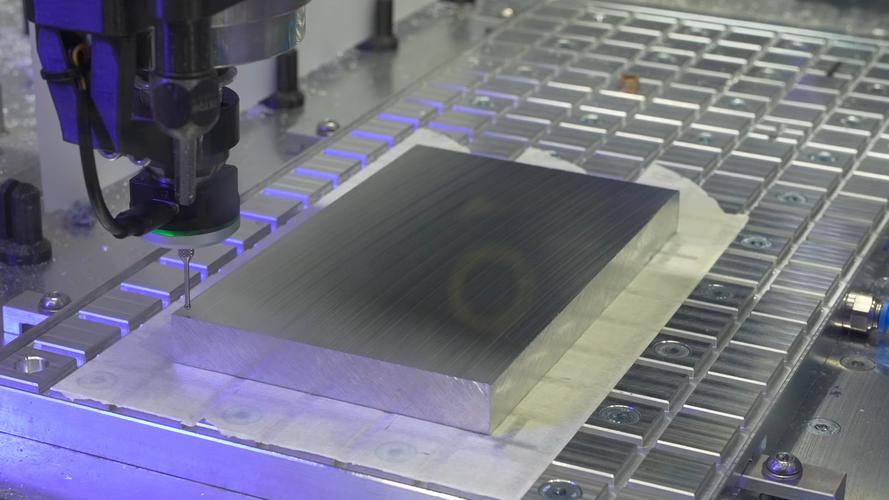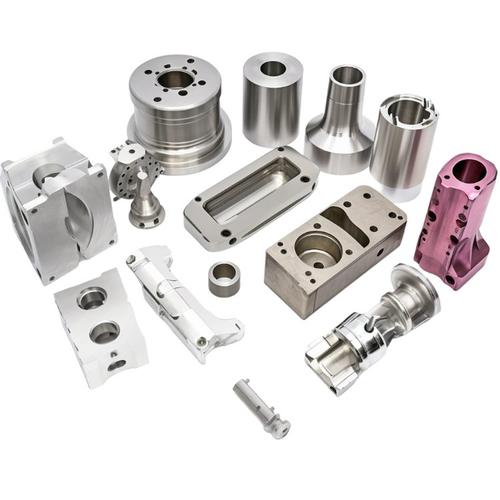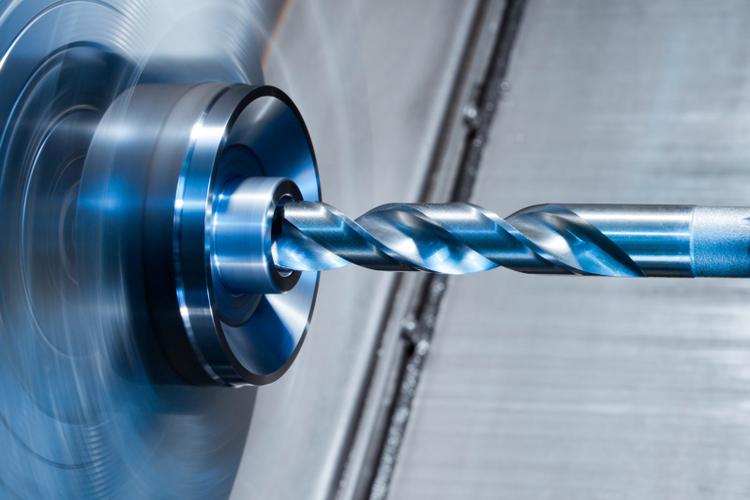
- Programmed positioning: X/Y/Z axes move the drill to exact coordinates (e.g., ±0.005mm accuracy).
- Controlled spindle speed/feed: Optimizes cutting parameters for different materials (e.g., aluminum vs. steel).
- Automated cycles: Peck drilling (for deep holes) or countersinking (for screw heads) reduces human error.
2. Why CNC Drilling Outperforms Traditional Manual Drilling
|
Advantage
|
CNC Drilling Performance
|
Traditional Manual Drilling Performance
|
Industry Data Support
|
|
Position Accuracy
|
±0.005-0.01mm (via servo-driven axes)
|
±0.1-0.3mm (reliable on operator skill)
|
Reduces hole position error by 95% (Source: CNC Precision Study 2025)
|
|
Dimensional Consistency
|
Batch hole size deviation ≤0.003mm
|
Batch deviation ≥0.05mm (due to hand tremors)
|
99.8% first-pass qualification rate for CNC (vs. 85% manual)
|
|
Efficiency
|
3-5x faster (200 holes/hour for φ5mm steel holes)
|
40-60 holes/hour (operator fatigue slows speed)
|
Cuts drilling time by 60% for automotive parts (Source: Manufacturing Efficiency Report)
|
|
Complex Hole Machining
|
Drills blind holes, stepped holes, angled holes
|
Limited to simple through holes (angle/ depth hard to control)
|
70% of aerospace complex holes rely on CNC (Source: Aerospace Machining Guide)
|
|
Automation
|
24/7 unattended operation (with auto-loaders)
|
Requires constant operator supervision
|
Reduces labor cost by 40% for high-volume production
|
3. Key Types of CNC Machines for Drilling
A. CNC Milling Centers (3/4/5-Axis)
- Core Strength: Drills holes in irregular parts (e.g., brackets, housings) via X/Y/Z-axis positioning; 5-axis models handle angled holes (e.g., 45° holes in engine blocks).
- Typical Application: Drilling 6×φ8mm through holes in an aluminum bracket (positioned at (10,20), (30,20), etc.).
- Key Feature: Supports “drill-tap-mill” integration (drills holes, taps threads, and mills chamfers in one setup).
B. CNC Turning Centers (With C-Axis)
- Core Strength: Drills radial/axial holes in rotational parts (e.g., shafts, bushings); C-axis indexes the workpiece to drill holes at specific angles (e.g., 90° cross holes in a shaft).
- Typical Application: Drilling a φ6mm axial hole (along Z-axis) and a φ4mm radial hole (perpendicular to Z-axis) in a φ30×100mm steel shaft.
- Key Feature: Uses “live tooling” (rotating tools on the turret) to drill while the workpiece is clamped.
C. Dedicated CNC Drill Centers (PCB/Metal)
- Core Strength: High-speed drilling for small, dense holes (e.g., PCB circuit boards, thin metal sheets); some models drill up to 10,000 holes/hour.
- Typical Application: Drilling 0.1mm micro-holes in a PCB (used in smartphones).
- Key Feature: Specialized spindles (10,000-60,000r/min) for micro-drilling.
4. Critical CNC Drilling Technologies (Precision & Safety)
A. Tool Selection: Match Drill to Material & Hole Type
|
Drill Type
|
Material Compatibility
|
Hole Type Application
|
Key Parameters
|
|
Twist Drill
|
Steel, aluminum, copper (general-purpose)
|
Through holes, blind holes (depth ≤5×diameter)
|
High-speed steel (HSS): Vc=20-50m/min; Carbide: Vc=80-150m/min
|
|
Spot Drill
|
All materials (pre-drilling guide)
|
Guides twist drills (prevents wandering)
|
Tip angle 90° (matches twist drill tip angle)
|
|
Deep-Hole Drill
|
Steel, stainless steel (depth >5×diameter)
|
Deep blind holes (e.g., 20×φ5mm holes)
|
Uses internal coolant holes (for chip evacuation)
|
|
Counterbore Drill
|
Steel, aluminum (for bolt heads)
|
Stepped holes (e.g., φ8mm hole + φ12mm counterbore)
|
Counterbore depth = bolt head height (e.g., 3mm for M8 bolts)
|
B. Peck Drilling: Solve Deep Hole Chip Evacuation
- Problem: Deep holes (depth >5×diameter) trap chips, causing drill breakage or hole scuffing.
- Solution: Peck drilling (G83 code for FANUC) — drills in small “pecks” (e.g., 2×diameter per peck) and retracts to evacuate chips.
- Program Example (φ5mm hole, depth 30mm):
- G83 X10 Y20 Z-30 R2 Q10 F100 // Q10=peck depth 10mm, R2=safe distance above workpiece
C. Spindle Speed & Feed Rate Optimization
- Rule of Thumb: Harder materials = lower speed + lower feed; softer materials = higher speed + higher feed.
|
Material
|
Drill Material
|
Spindle Speed (S)
|
Feed Rate (F)
|
|
45# Steel (HB200)
|
Carbide Twist Drill
|
1200r/min
|
50mm/min (φ5mm)
|
|
6061 Aluminum
|
Carbide Twist Drill
|
3000r/min
|
150mm/min (φ5mm)
|
|
304 Stainless Steel
|
Carbide Twist Drill
|
800r/min
|
30mm/min (φ5mm)
|
D. Coolant Application: Reduce Heat & Wear
- Through-Hole Drilling: External coolant (flow rate ≥15L/min) — cools the drill tip and flushes chips.
- Deep-Hole Drilling: Internal coolant (pressure ≥5MPa) — delivers coolant directly to the cutting zone (reduces drill wear by 30%).
5. Practical Case: CNC Milling Center Drilling φ8mm Holes in a Steel Bracket
Step 1: Equipment & Tool Preparation
- Machine: FANUC 0i-MF 3-axis milling center.
- Tools: φ6mm spot drill (for guiding), φ8mm carbide twist drill (for final drilling), coolant system (20L/min flow).
Step 2: Process Planning
- Spot Drilling: Create 2mm-deep guide holes (prevents drill wandering).
- Final Drilling: Drill φ8mm through holes (depth 10mm) via peck drilling (G83).
- Deburring: Use a φ10mm countersink (G82) to remove burrs (chamfer 0.5×45°).
Step 3: Programming Snippet (FANUC System)
Step 4: Quality Verification
- Position Check: Use a coordinate measuring machine (CMM) to confirm hole positions (deviation ≤0.008mm).
- Size Check: Use a pin gauge (φ8H7) — gauge should pass through without resistance.
- Surface Check: Inspect hole walls with a borescope (Ra=2.8μm, meets requirement).
6. Common CNC Drilling Problems & Solutions
1. Hole Deviation (Drill Wanders)
- Cause: No spot drilling (drill tip slips on workpiece surface) or spindle runout (>0.002mm).
- Solution:
-
- Add spot drilling (depth = 1-2×drill diameter) before final drilling.
-
- Calibrate spindle runout (replace bearings if >0.002mm).
2. Drill Breakage (Deep Holes)
- Cause: Chips trapped in hole (no peck drilling) or feed rate too high.
- Solution:
-
- Use peck drilling (G83) with Q=2-3×drill diameter (for deep holes).
-
- Reduce feed rate by 20% (e.g., from 50mm/min to 40mm/min for stainless steel).
3. Oversized Holes (Diameter > Requirement)
- Cause: Drill wear (flutes dull) or tool offset set incorrectly.
- Solution:
-
- Replace dull drills (check for worn flutes with a magnifier).
-
- Adjust tool offset (e.g., if hole is φ8.005mm, reduce X-axis offset by 0.0025mm).
7. Q&A: High-Frequency CNC Drilling Questions
Q1: Can CNC drill micro-holes (diameter <0.5mm)?
- Yes—use dedicated micro-drills (tungsten carbide with diamond coating) and high-speed spindles (30,000-60,000r/min). For example, CNC PCB drill centers drill 0.1mm holes in circuit boards with ±0.001mm accuracy.
Q2: How to drill angled holes (e.g., 30° from workpiece surface)?
- Use a 5-axis CNC milling center (tilts the workpiece or drill to 30°) or a 3-axis machine with an angle plate (clamps the workpiece at 30°). Program the hole coordinates in the tilted coordinate system (G54/G55).
Q3: What’s the maximum depth of a CNC-drilled hole?
- For standard twist drills: Up to 5×diameter (e.g., φ5mm drill → 25mm depth). For deep-hole drills (with internal coolant): Up to 30×diameter (e.g., φ10mm deep-hole drill → 300mm depth). Beyond that, use gun drilling (a specialized deep-hole process).

